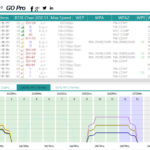The difference between bandwidth and latency

The difference between bandwidth and latency is something that confuses a lot of people, but if you are an IT professional it would be useful to know the difference between the two because sooner or later you will face a network problem related to it. Part of the confusion has been created by Internet providers by always recommending increase of…
Troubleshooting wifi problems at the office

The organization where I work recently moved to a new office space in a more crowded location and our users started complaining about wifi connectivity issues a lot. Their connection would become unresponsive at times, with ocasional timeouts. We didn’t change anything in our WIFI setup from our previous office, and we didn’t have that problem in our old place,…
The Computer Requires Network Level Authentication Error

If you are connecting to a Windows Server 2008 or Windows 7 computer through remote desktop you might get this error: “The remote computer requires Network Level Authentication, which your computer does not support” here is a screenshot of the actual fat error: the reason you are getting this error is because you are either using Windows XP, or another…
